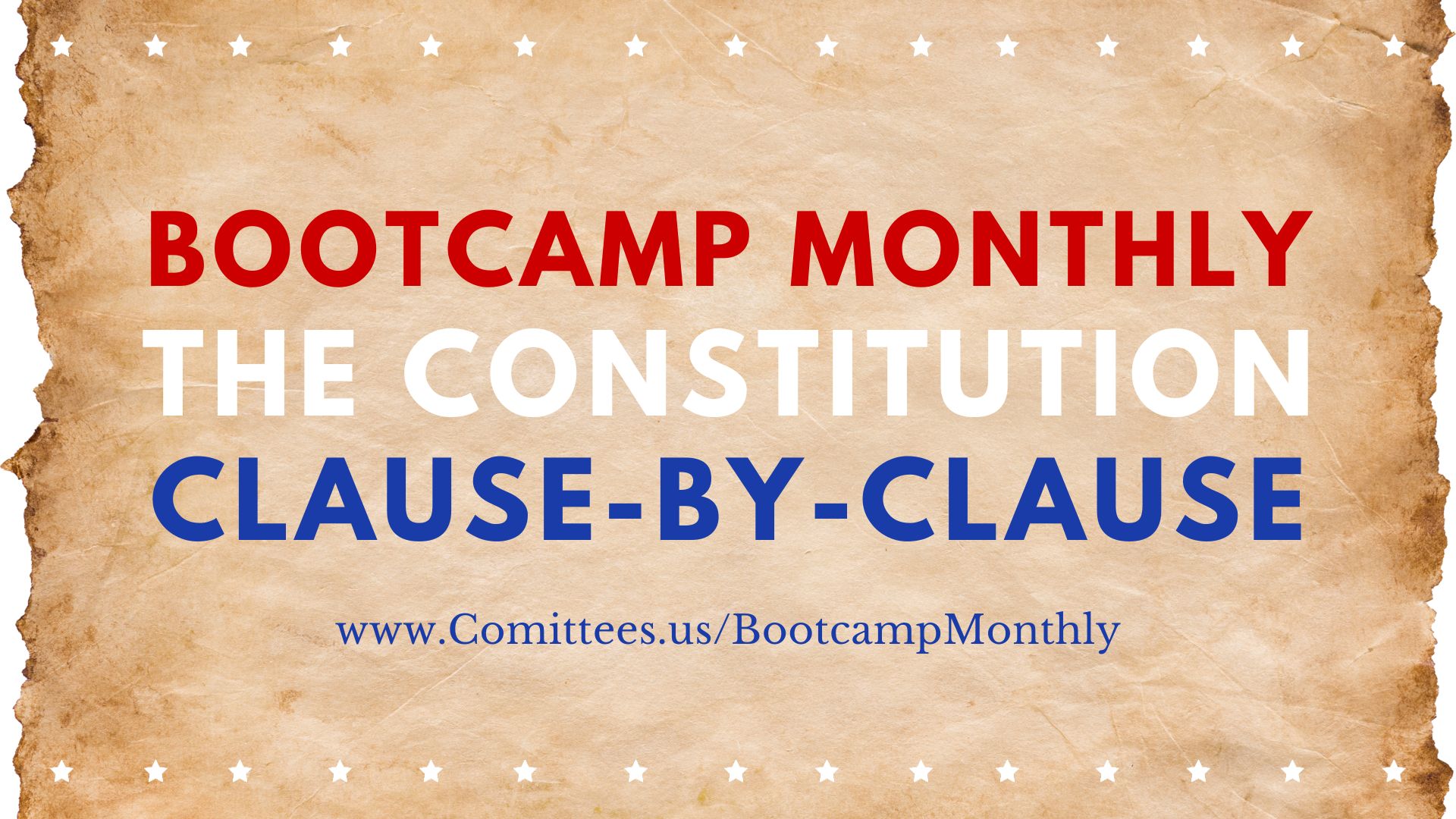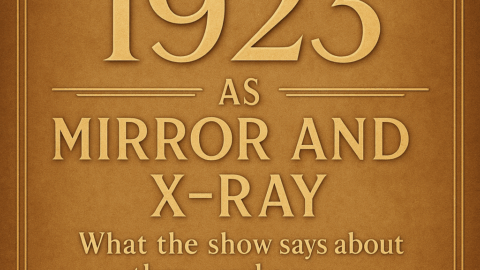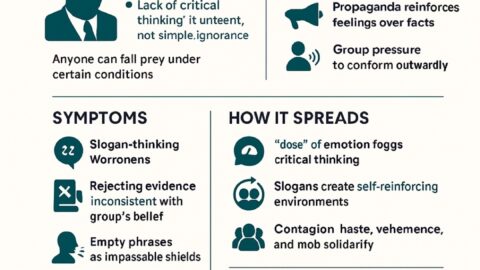According to the Corbett Report’s documentary “Why Big Oil Conquered the World,” the ruling energy interests never pursued oil for its own sake—they pursued control. This article distills the film’s argument into a clear, readable narrative, tracing the through-line from eugenics to environmentalism to technocracy.
The Thesis in One Line
The documentary contends that a tight constellation of families and firms—Rockefellers, Rothschilds, and allied royal/financial houses—used oil wealth to seed institutions, narratives, and technologies that would ultimately let them meter, price, and manage life itself: energy use, money, land, food, reproduction, and behavior.
Part I: From Population “Science” to Population Control
A new mission for old money. John D. Rockefeller III (JDR3) emerges as the bridge between Gilded Age oil fortunes and postwar “population policy.” After wartime tours and foundation studies, he founds the Population Council (1952) to direct research and programs aimed at fertility and demographic “stabilization.”
The eugenic pedigree. The film argues that the Population Council inherited the staff, goals, and mindset of pre-war eugenics: improving the human stock by discouraging or preventing reproduction among those deemed “unfit.” It highlights:
- American eugenics infrastructure (Cold Spring Harbor’s Eugenics Record Office, Carnegie and Rockefeller support, Social Hygiene) and the mainstreaming of eugenic thinking across elites and popular culture.
- Law and precedent: Buck v. Bell (1927) upholds forced sterilization—Justice Holmes’s line, “Three generations of imbeciles are enough,” becomes a lever for tens of thousands of procedures.
- Export and escalation: Interwar Rockefeller grants help rebuild German science; figures like Ernst Rüdin shape the 1933 sterilization law, leading to mass sterilizations and, later, Aktion T4 euthanasia.
Rebranding after WWII. With “eugenics” tainted by Nazism, the documentary says the same aims moved under new banners: “population studies,” “molecular biology,” and philanthropic global health. Frederick Osborn (ex–American Eugenics Society) is quoted predicting that eugenic goals would proceed “under another name.”
Part II: From Population to Planet—Greening the Mandate
The conservation turn. Post-1960s, the film traces a pivot from population talk to planetary limits: resource depletion, pollution, climate. It spotlights Julian Huxley (UNESCO’s first head, ex-British Eugenics Society president) helping birth the IUCN (1948) and WWF (1961) alongside Prince Bernhard, Prince Philip, and Godfrey Rockefeller—framing conservation as the new vessel for management.
Maurice Strong’s double helix. A Rockefeller-connected Canadian who moved fluidly between oil posts and UN green leadership, Maurice Strong organizes the 1972 Stockholm Conference, becomes UNEP’s first director, later heads Petro-Canada, and convenes high-level “wilderness” meetings tying conservation to finance (the film foregrounds Edmond de Rothschild and proposals for a “World Conservation Bank”).
Rio 1992: the architecture lands. The Earth Summit formalizes pillars the film views as instruments of governance:
- The Global Environment Facility to finance projects and “debt-for-nature” swaps (critics in the film say dispossession can follow).
- The UNFCCC/IPCC process (portrayed here as structured to emphasize anthropogenic causation).
- The Earth Charter (with Steven Rockefeller involvement) as a values frame for global stewardship.
Reframing fertility as carbon. Where early eugenics spoke of “fitness,” the modern rhetoric, the documentary argues, speaks of carbon footprints—with studies and punditry casting fewer births as climate action. Meanwhile, oil-linked dynasties publicly embrace divestment and Paris-style targets, recasting themselves as planetary guardians.
Part III: Technocracy—Pricing Life in Joules
Hubbert beyond “peak oil.” The film treats M. King Hubbert less as a depletion prophet than as a key technocrat. In the 1930s he co-authors the Technocracy “study course”: a blueprint to replace money with energy certificates denominated in joules, allocated equally, and reconciled by a central board that tracks every unit produced and consumed, 24/7.
Prerequisites for control. Hubbert’s list—total metering of national energy, a live register of all goods and embodied energy, and a personal consumption ledger for every citizen—looked impossible then. The film argues it’s being built now via:
- Smart grids, smart meters, smart cities, IoT: a mesh of sensors and automated billing that produce the real-time datasets technocracy needs.
- Carbon markets & taxes: Enron’s early SO₂ trading, lobbying for CO₂ markets; Al Gore/Goldman Sachs ventures; USCAP (with BP, ConocoPhillips, GM) drafting cap-and-trade proposals; majors publicly backing Paris. The claim: the very incumbents shape the rules of the system meant to restrain them.
From money to resources. The film’s strategic view is blunt: once finance has been “exhausted” as a control lever, the endgame is custody of resources themselves under “sustainable development”—what it calls a neo-feudal governance of land, water, biodiversity, and energy, administered by trusts, standards, and global facilities.
The Arc in a Sentence
Snake oil to Standard Oil; eugenics to population; conservation to climate; carbon to data—each rebrand, the documentary insists, has advanced the same objective: granular, technocratic management of people and planet.
Why This Matters (Whether You Agree or Not)
- Institutional memory: The film stitches real institutions—foundations, UN bodies, banks—into a long narrative. Even if one disputes its inferences, understanding how these entities interlock is civics homework.
- Design power: Standards, markets, and meters often shape behavior more than laws. Who designs them, and to what end, is a fair question.
- Data is destiny: Smart infrastructure can lower waste—and centralize influence. Democratic oversight of data plumbing matters.
The Documentary’s Challenge to the Reader
Corbett’s closing prompt is simple: learn the lineage, read the footnotes, follow the money, and decide whether today’s post-carbon project disperses power—or perfects it.
“Why Big Oil Conquered the World” — point-by-point guide to the Corbett Report transcript
Below is a crisp, section-by-section unpacking of the documentary you quoted (German transcript). It tracks the film’s structure and main claims without arguing for or against them.
Prologue: the “post-carbon” pivot (0:00–5:00)
- Scene-setting: news bites on population growth, Rockefeller family divesting from fossil-fuel holdings, Saudi Arabia rethinking oil dependence, and a swelling global divestment movement.
- Core claim: the apparent retreat of oil is not defeat; the “oiligarchs” (Rockefeller/BP/Royal Dutch Shell lineages, Rothschilds, allied elites) always sought control, not oil per se.
- Thesis: they’re front-running and shaping a post-carbon order where energy, money and even the human genome are tightly managed.
PART I — The rise of eugenics (5:05–36:25)
Rockefeller & population control (5:16–10:27)
- Dhaka, 1963: John D. Rockefeller III (JDR3) frames crowded streets as a “population problem.”
- Population Council (1952): founded and initially funded by JDR3 to steer research and policy on population and fertility.
- Draft charter language: (later removed) lifted from Eugenical News about encouraging larger families among the “above-average” in intelligence/personality—flagged internally as openly eugenic.
Eugenics, summarized (10:27–18:59)
- Definition/storyline: from Galton’s “well-born” idea blending Mendelian heredity, Darwin/Spencer, and social hierarchy.
- Beliefs critiqued: attributes like poverty, crime, “feeble-mindedness” treated as hereditary; pseudo-measures (e.g., phrenology); notorious studies (e.g., Kallikak) later discredited.
U.S. institutional build-out (19:07–23:28)
- Charles Davenport: spearheads American eugenics; proposes a national genetic registry.
- Cold Spring Harbor & the Eugenics Record Office (ERO): seed funding from Carnegie; the film says Rockefeller money, staff, and prestige also aided related efforts (e.g., Social Hygiene).
- JDR Jr. correspondence: interest in segregating/sterilizing “mentally inadequate” inmates; funds criminology work tied to eugenic screening.
Normalization & law (23:28–32:32)
- Mainstreaming: public fairs (“Fitter Families”), clergy contests, pop culture, and major figures (Marie Stopes, Keynes, Bell, Shaw) expressing eugenic views.
- Sterilization laws: Indiana (1907) first; many states follow.
- Buck v. Bell (1927): test case upholding Virginia’s sterilization law; Holmes’s “Three generations of imbeciles are enough.” Decision opens floodgates to tens of thousands of forced sterilizations.
Export to Germany & rebrand after WWII (32:32–36:25)
- Rockefeller grants in interwar Germany: support to Kaiser-Wilhelm institutes; Ernst Rüdin helps craft the 1933 sterilization law (modeled, the film says, on Harry Laughlin’s template).
- Scale: ~400,000 sterilizations; later Aktion T4 euthanasia.
- After 1945: “eugenics” becomes toxic; leadership moves into “population studies,” “molecular biology,” and foundations. Frederick Osborn: eugenic goals will proceed “under another name.”
PART II — “Oiligarchs for climate change” (36:34–1:04:22)
From population to environment
- JDR3 chairs Nixon’s Commission on Population Growth (1969–72): argues for stabilization.
- Julian Huxley: UNESCO’s first head; former British Eugenics Society president; helps found IUCN (1948) and co-found WWF (1961) with Prince Bernhard, Prince Philip, and Godfrey Rockefeller.
Maurice Strong’s bridge role (37:04–49:19)
- Profile: school dropout turned millionaire oilman with Rockefeller ties; alternates between energy posts and global green leadership.
- Stockholm ’72: Strong organizes the first UN environment conference; becomes UNEP’s founding head.
- Petro-Canada: later serves as its first president—illustrating, the film argues, the oil-green nexus.
Wilderness, banking, and Rio (49:19–1:03:20)
- World Wilderness Congress (1987): Strong, David Rockefeller, Edmond de Rothschild and others discuss “conservation banking” and a World Conservation Bank.
- Rio Earth Summit (1992):
- Launches the Global Environment Facility (GEF) (the film calls this the conservation bank idea realized) to finance projects and debt-for-nature swaps.
- Establishes UNFCCC and the IPCC reporting channel; the film claims Strong’s remit presupposed anthropogenic causation and that summaries drive the science/policy loop.
- Earth Charter: co-crafted with Gorbatschow; presented as a quasi-moral framework; Steven Rockefeller’s role noted.
From eugenics to carbon (1:03:20–1:07:32)
- Reframing: managing fertility/populations now couched as carbon-reduction (e.g., studies on fewer children lowering emissions).
- Legitimacy shield: oil-linked elites recast as environmental champions (Rockefeller divestment; David Rothschild activism; princes and CEOs backing Paris goals).
Net claim: the post-carbon push consolidates technocratic control; “it was never about oil.”
PART III — Agenda: Technocracy (1:09:55–1:41:26)
Peak oil as narrative (1:10:03–1:12:16)
- M. King Hubbert (Shell): predicts U.S. peak ~1970 and global decline by ~2020.
- Film’s view: a scarcity script; parameters and methods portrayed as chosen to imply high prices and urgency.
Technocracy’s blueprint (1:12:22–1:23:17)
- Origins: Veblen’s circle; Columbia University moment with Howard Scott; Hubbert becomes key theorist.
- Core design: replace money with energy certificates (denominated in joules) allocated equally; every production/consumption event logged in real time; a central board balances the system.
- Requirements (per Hubbert’s study course):
- Continuous metering of national energy use;
- 24/7 capture of production/consumption data;
- A complete catalog of goods, embodied energy, time/place of sale;
- Personal consumption records for every individual.
The modernized version (1:23:17–1:41:26)
- Policy tools: carbon rationing, personal carbon allowances, cap-and-trade, carbon taxes.
- Market-makers: Enron championed SO₂ trading, then lobbied for CO₂ markets; Gore/Goldman Sachs linkages and the Chicago Climate Exchange; USCAP (with BP, ConocoPhillips, GM) drafted U.S. cap-and-trade proposals; oil majors publicly backed Paris.
- Infrastructure: smart grids, smart meters, IoT, smart cities—pitched as efficiency/green but, the film argues, functionally a real-time social/energy ledger akin to technocracy’s data prerequisites.
- Strategic arc: “sustainable development” becomes a mechanism to concentrate resource control (debt-for-nature, land designations), amounting to neo-feudalism where elites steward global commons.
Conclusion & call to action (1:41:26–end)
- Bottom line: “It was never about oil. It was about control”—of energy, resources, reproduction, and daily life via technocratic instruments.
- Through-line: from “Devil Bill’s” snake oil to foundations, eugenics, population, environment, carbon, data—each stage reframed but serving the same consolidation of power.
- Audience prompt: read the linked transcripts and sources, share, and scrutinize the institutional architecture behind environment/population/finance agendas.
Quick map of recurring motifs
- Rebranding: eugenics → population control → environmental sustainability → carbon management → data-driven technocracy.
- Vehicles of influence: philanthropy, UN bodies, scientific framing, finance facilities, standards/charters, and infrastructure.
- Control levers: currencies and reserves (petrodollar), seeds/food systems, health institutions, carbon accounting, and pervasive metering.





